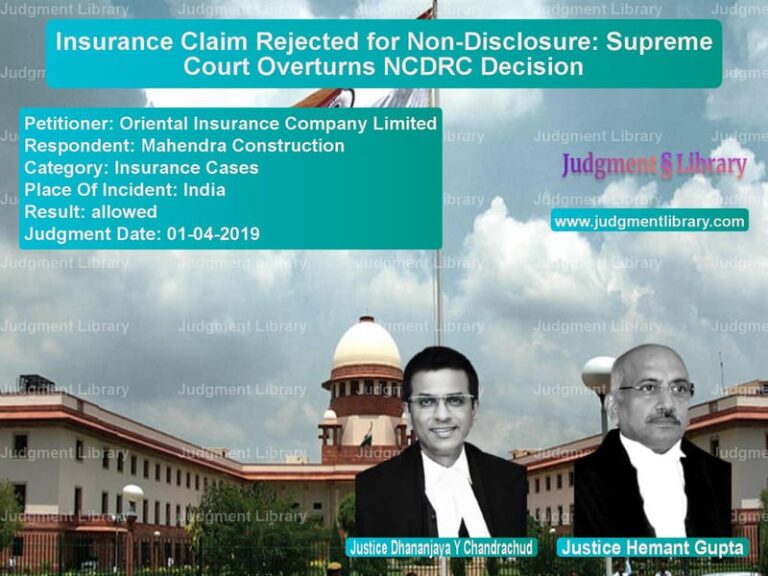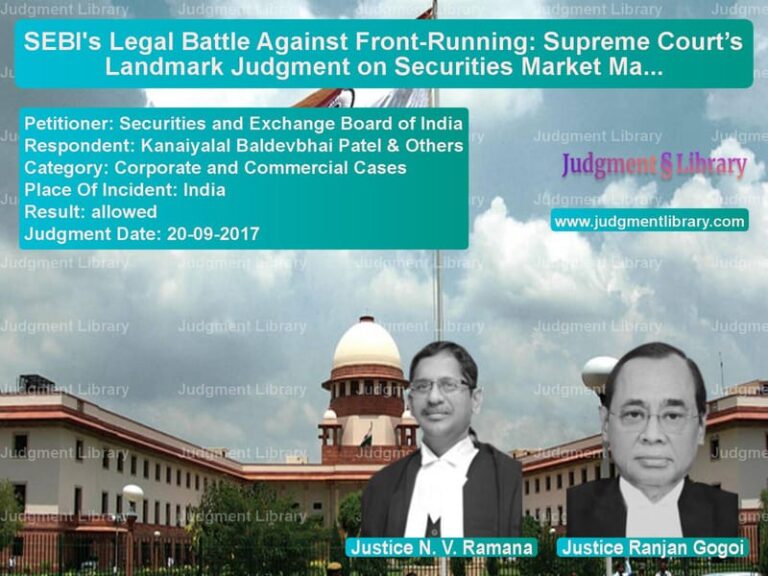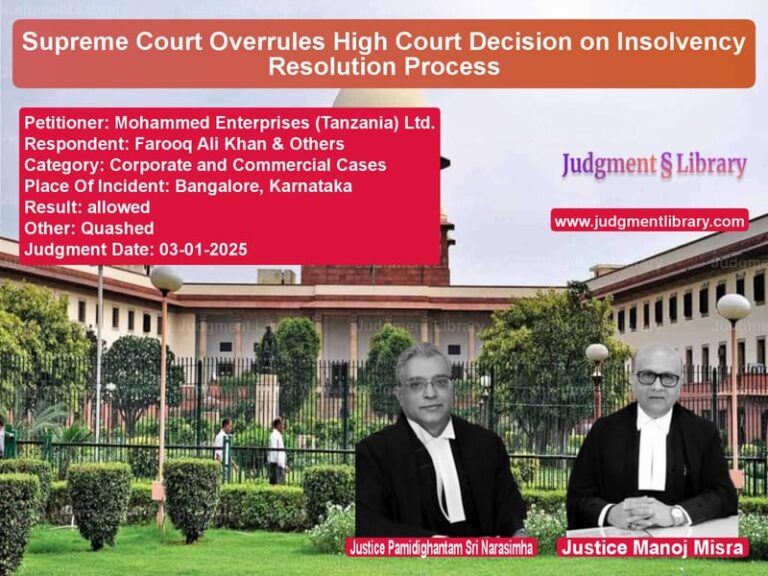Chhattisgarh Murder Case: Supreme Court Acquits Accused Due to Doubts in ‘Last Seen’ Evidence
The Supreme Court of India recently dealt with a murder case involving the accused Rambraksh @ Jalim, who was convicted for the murder of Ramsevak. The case was primarily based on circumstantial evidence, including the ‘last seen’ theory, where the accused was allegedly seen with the deceased before his disappearance. However, after examining the case, the Supreme Court concluded that the evidence presented was insufficient to sustain the conviction and acquitted the accused.
Background of the Case
The case began on October 7, 1992, when Rambraksh, the appellant, invited Ramsevak to accompany him to Ambikapur. Ramsevak refused but later agreed to travel with the appellant and Bechan Ram, the co-accused. After that night, Ramsevak disappeared, and his body was found on October 14, 1992, with scattered bones identified as his. The prosecution presented the case based on circumstantial evidence, primarily the ‘last seen’ theory, where Ramsevak was last seen with the accused. The police recovered the bones and clothes of the deceased in a field, and the case proceeded to trial.
The Prosecution’s Case
The prosecution argued that Ramsevak had been misappropriated and murdered by the accused. The key piece of evidence was the statement from the deceased’s wife, Dasmatiya Bai (PW3), who testified that the appellant had taken her husband along with Bechan Ram, and after their departure, Ramsevak never returned. When his body was later discovered, it was a set of bones, which were identified as Ramsevak’s. The prosecution relied on this evidence to establish that the accused were guilty of the murder and misappropriation of the deceased’s belongings.
Key Issues in the Case
- Whether the circumstantial evidence, specifically the ‘last seen’ theory, was enough to convict the accused.
- Whether the prosecution had proven the death of Ramsevak and established that the bones were indeed his.
- Whether there was sufficient corroborative evidence to support the charges against the accused.
Arguments Presented
Petitioner (Rambraksh @ Jalim)
- Argued that the prosecution’s case relied solely on the ‘last seen’ theory, which had a significant gap of seven days before the body was discovered.
- Claimed that the prosecution failed to prove that the bones found were those of Ramsevak and that there was no conclusive evidence regarding the cause of death.
- Pointed out the delay in filing the complaint and inconsistencies in the testimony of the key witness, Dasmatiya Bai.
Respondent (State of Chhattisgarh)
- Argued that the prosecution had established the case through the testimony of Dasmatiya Bai, who had clearly stated that the appellant was seen with her husband before his disappearance.
- Claimed that the recovery of the bones and the circumstantial evidence of the last seen together were sufficient to establish the guilt of the accused.
Supreme Court’s Judgment
The Supreme Court, after careful examination, found several weaknesses in the prosecution’s case. It noted that the time gap between the ‘last seen’ evidence and the discovery of the body was too long, making it difficult to conclusively link the accused to the crime. The Court also highlighted that the prosecution had not proven the cause of death or established that the bones found were those of the deceased. The absence of DNA analysis further weakened the case.
Additionally, the Court found that the ‘last seen’ theory alone was insufficient to convict the accused, as the prosecution failed to provide a complete chain of circumstantial evidence. Citing previous cases, the Court emphasized that a conviction based solely on the ‘last seen’ evidence is not sustainable unless supported by other corroborative evidence.
The Court also acknowledged the unexplained delay in lodging the complaint and found that the testimonies of some key witnesses were inconsistent with earlier statements.
Conclusion
The Supreme Court concluded that the prosecution had failed to prove its case beyond a reasonable doubt and acquitted the appellant. The Court set aside the conviction and sentence imposed by the High Court, emphasizing that the ‘last seen’ theory, along with other circumstantial evidence, was not enough to sustain the conviction. The case was remanded back to the trial court for further proceedings.
Don’t miss out on the full details! Download the complete judgment in PDF format below and gain valuable insights instantly!
Download Judgment: Rambraksh @ Jalim vs State of Chhattisgar Supreme Court of India Judgment Dated 12-05-2016-1741860818062.pdf
Direct Downlaod Judgment: Direct downlaod this Judgment
See all petitions in Murder Cases
See all petitions in Fraud and Forgery
See all petitions in Judgment by Jagdish Singh Khehar
See all petitions in Judgment by C. Nagappan
See all petitions in allowed
See all petitions in Quashed
See all petitions in supreme court of India judgments May 2016
See all petitions in 2016 judgments
See all posts in Criminal Cases Category
See all allowed petitions in Criminal Cases Category
See all Dismissed petitions in Criminal Cases Category
See all partially allowed petitions in Criminal Cases Category







